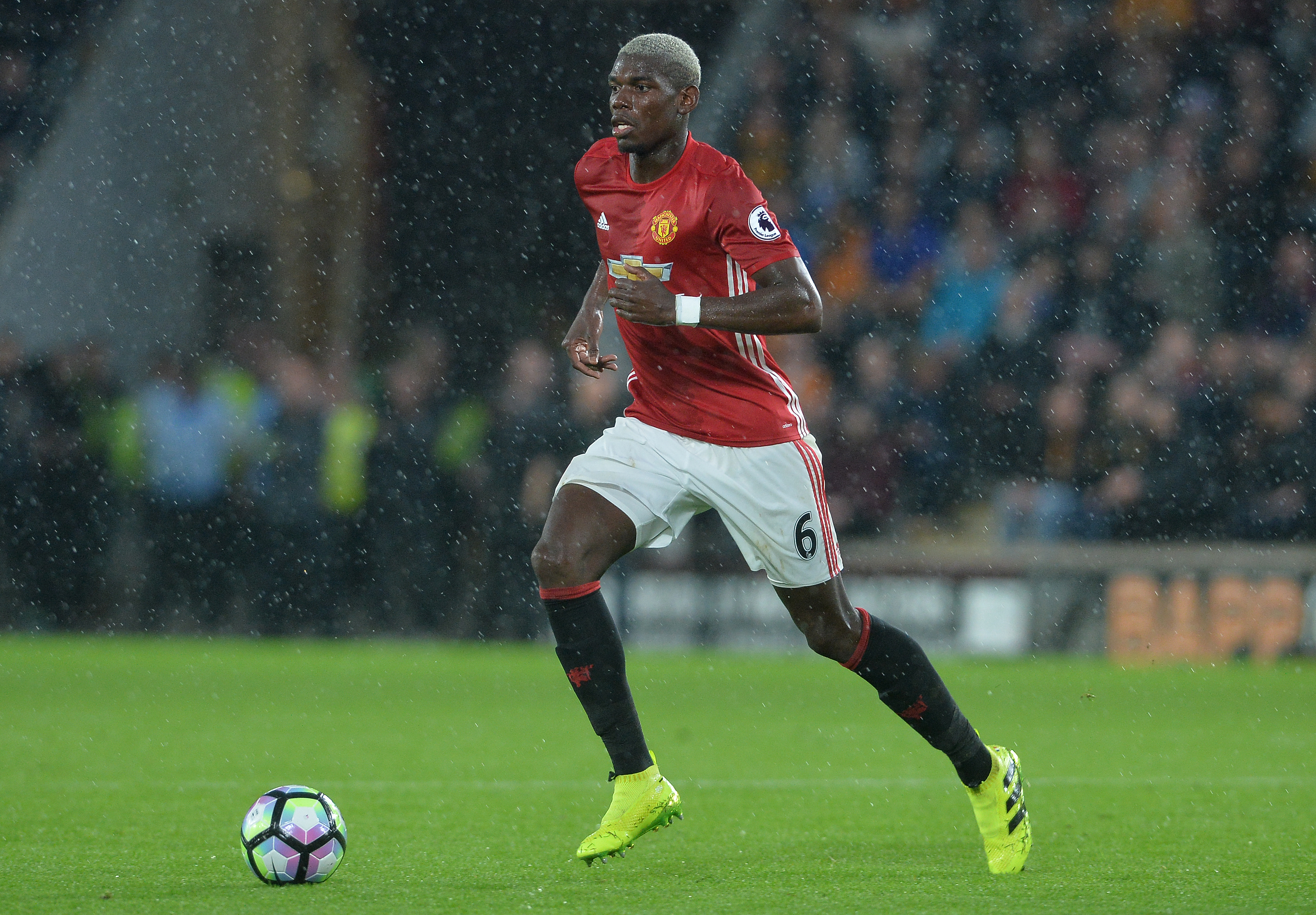Pricing a Footballer: An Understanding of how players are valued in the transfer market
Heated debates raged over the transfer of Paul Pogba at 105-million and the 90-million price that Gonzalo Higuain extracted. Every transfer market and every stratospheric price always gives rise to the questions - why are players worth so much money? How do they come up with those numbers?

With the 2016-17 season of football commencing across Europe, the month of August is one that is recognised for its intense bargaining as teams look to pick up players before the summer transfer window closes. Fans across the world gaze awestruck, as players are bought and sold for exorbitant sums of money.
The 2016 Summer transfer window especially will be remembered as it witnessed Manchester United bringing back an old friend and in the process making Paul Pogba the most expensive player in the world. Paying close to 105 million euros to Juventus, the Red Devils geared up for what looks to be the most exciting season in the Premier League. But as this purchase and a few others like the elongated saga of John Stones deal came to an end, fans and football pundits began to contemplate if the players were indeed worth such money.
Often times we have noticed some players who we considered a lot better than the others tend to move for a transfer fee that is lesser than some others. But does that make him being a better player? Here are some parameters which the Football industry uses to value players in a transfer market. Now although these methods give somewhat of a clear picture on how a value is fixed on these players, they are never employed in solitude and always work complementing each other with a host of other qualitative influences.
Demand and Supply
The economic laws of demand and supply are omnipresent when a market is involved. Much like the services of a plumber or a lawyer, football players offer their playing skills as service to clubs. The forces of demand drive up the value of the player, hence putting a price tag for his skills. Usually this valuation is also dependent on the opportunity cost (the next best alternative) of a player.
If say, for example, a team requires a tall, left-footed centre -back, there are four defenders that the team considers. Each would have a pre-determined price tag on them. However, this price tag is just a starting point from where the bargaining will begin. If one or more of the choices get signed by other teams, the supply has now reduced, allowing the selling team to demand more from the buyer. This is one of the reasons why we see that when teams go in specifically for one player ,there is always an exorbitant price quoted for him.
Now, in the above example, throw in a free agent into the equation, i.e. a player who has run down his contract. Depending on his quality when compared to the team's list of targets, the price of the remaining players will increase or decrease. Better the free agent, lower the price of the defenders in consideration. Now as simple as this example might seem, this can work only when all other factors such as involvement of agents, relationship of club with the seller and so on remain out of the equation. With these forces active, the outcome could vary vastly.
Contract Conditions
A lot of times, transfer prices are down to contract conditions such as a release clause, and the amount of time remaining in a player’s contract. Usually when a club signs a player for a long duration, and another team wishes to purchase him, the buying team is essentially paying the player a sum that is equal to his contract value after subtracting the time already spent at his current club. Hence, lesser the duration left in the contract, lower the bargaining power of the club that wishes to sell him. This is one of the reasons why clubs rush to renew contracts of players even if they know they might not be in the manager's game plans.
A great example of this situation is that of Anthony Martial. Initially, Martial who had a year left on his contract at AS Monaco, was being scouted by Tottenham and was quoted to move at around 18 million pounds. However, a few weeks later, Manchester United paid a whopping 40-odd million for the same player. Sure, Twitter was filled with remarks questioning Louis Van Gaal’s common sense. But what did happen in the middle was that Anthony Martial extended his agreement with Monaco, which drove up his asking price, after which United paid the larger sum to pry the star away from the French club.
Many teams, in order to prevent their star players from leaving the club, usually include a release clause in their contract. These release clauses can be anywhere between a fairly calculated number to the price of the moon. However, some clubs that are desperate to bring one particular player to their stadium often pay so that the club losing the player are at least left with their pockets stuffed with cash. The recent 90-million transfer of Gonzalo Higuaín to Juventus is a good example of Napoli stuffing their pockets.

 Napoli made the most of the interest from Juventus by selling Gonzalo Higuain for 90 million Euros © Getty Images
Napoli made the most of the interest from Juventus by selling Gonzalo Higuain for 90 million Euros © Getty ImagesCost Plus mark up
This is used predominantly among smaller clubs that are selling their home-grown players. Academy graduates who have entered the first team but haven’t played a game have no record to back their reputation. Usually in these circumstances, clubs charge a development fee and add a transfer premium that they feel is sufficient to compensate them for his loss or what they believe is his worth in the market. Usually this type of pricing is heavily influenced by demand and supply and has no other logic behind it. Usually these players are sent to a smaller club on loans and then sold at a price agreed in the buyback clause that is predetermined in the contract.
Alex Pritchard, a player who was touted to be a breakthrough number ten from Tottenham’s academy, struggled to impress any of the managers despite his huge potential. After making only two appearances for Spurs, the Englishman spent the majority of his time on loan to championship teams. During this transfer window however, he was sold to Norwich City for a staggering 8 million. Surely Spurs spent quite a lot of money training the midfielder in their academy, but the sale price reflects a tidy profit the club made in sending the player away.
The Sudden Rise
Although the above methods have remained more or less the same, it still doesn’t explain the sudden steep rise in the value of football players. Zinedine Zidane and Luis Figo, who are considered greats even today, were purchased at prices of about 35-45 million, a price tag the likes of Andy Carroll and Raheem Sterling demand in today's world. Of course you could argue that factoring inflation, you could get a higher transfer value of close to 70-80 million in current rates. However, when you compare the prices of players who are as valuable to a team like Hazard, Suarez and Lewandowski, the asking prices are quite nasty to the wallet. In today’s world, players in the Premier League who have no proven track record or just one brilliant season demand transfer values close to 35 million Euros.

 Arsene Wenger believes that clubs demand more from the Premier League clubs © Getty Images
Arsene Wenger believes that clubs demand more from the Premier League clubs © Getty ImagesSelective Pricing
Arsene Wenger was recently heard commenting that in the transfer market, players had two price tags. One for the Premier League and one for the rest of the world. While this might be considered a sheepish excuse for being miserly in spending the club's money, there is a fair bit of truth in the statement. Clubs often tend to charge a higher fee when dealing with a richer club as they look to use the opportunity to squeeze out as much as possible from the bigger player. Not that it isn’t a motive all the time, but the chances of coming away with more from a club for whom a million isn’t a big deal is easier than asking a club smaller club that is worried that any overspending might force them into bankruptcy. With even recently promoted Premier League clubs earning ‘zillions’ through the TV rights, they are able to afford players like Payet and Negredo who would otherwise be playing for a top team in another league.
Inflationary Impact
Clubs that play in the English Premier League have always boasted of earning revenues that are beyond the reach of some the average, and even reasonably good teams in other leagues. This increase in cash flow, mainly attributed to the monstrous TV rights deals that the Premier League has negotiated, is what impacts the league's transfer prices. Thus like inflation in an economy, Premier League sides have increase in supply of money which drives their ability to spend and, in consequence, inflating the value of players.
As teams obtain more and more money, they are able to outbid and over-pay not only transfer fees, but player wages as well. When other teams are forced to pay 10-12 million for a particular player, the cash-rich Premier League sides offer to pay 15-20 million for the player's signature in order to prevent a bidding war or a possible hijack. This, in turn, has a cyclical impact on players who plan to leave the club. After having earned a fat pay check in the Premier League, clubs selling a player want to recover as much money as they can for having paid wages to the player for the past years. This in turn drives up the player’s asking price.
With the constant ballooning of player prices, it wouldn’t come as a surprise if Premier League clubs break the world’s most expensive player record many times over the next transfer windows even if the Ronaldos and Messis stay put at La Liga.

Comments
Sign up or log in to your account to leave comments and reactions
0 Comments